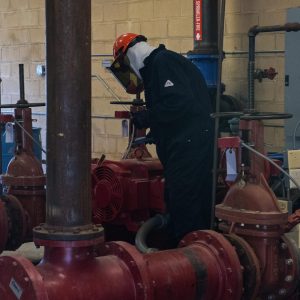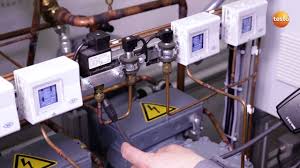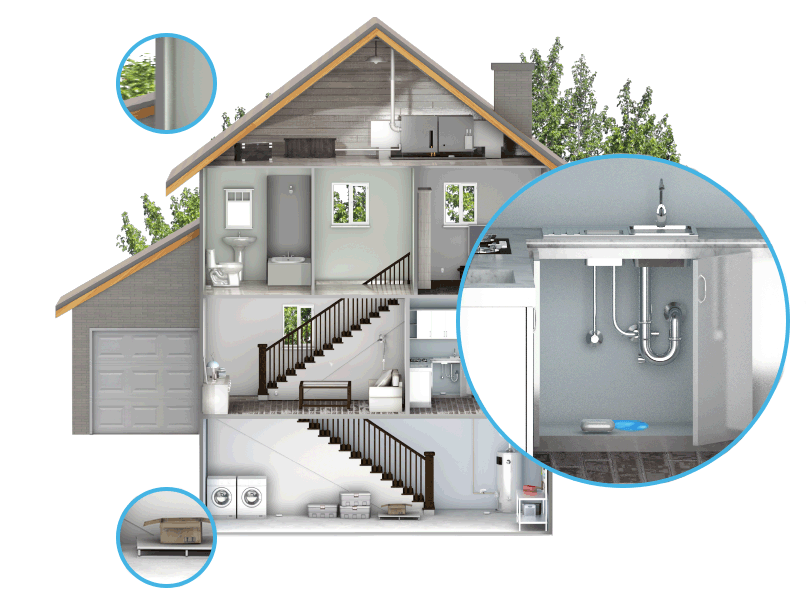Quick Tips for Electronic Leak Detection
Use Your Detector Second
Before starting to use your detector — stop! Look for signs of leaks and corrosion throughout the entire system. I see many techs who use an electronic leak detector with a very large leak when they would have been better served pressurizing and pinpointing the leak with soap bubbles.
Get a Good Detector
Use a good quality leak detector. Hint: If it costs less than $300, it probably isn’t great. I am fan of the H10G and the H10Pro, although we are testing the Tifzx-1 as a possible option on the recommendation of a few good techs I trust
Test Your Detector
Check your detector and make sure it actually works every time. The H10G has a reference bottle for testing — use it.
Let the Detector Warm Up
Many leak detectors require a warm up time for the sensor. With the H10G I allow it to run for at least five minutes before I start to use it.
Start Testing at The Top
Most refrigerants are heavier than air. Starting at the top and working your way down will help keep you from picking up a leak below the actual point of origin

How To Choose A Leak Testing Method That’s Best For Your Needs
When deciding on the best solution for a leak testing challenge, many factors need to be taken into consideration including the risk, suitability and cost of each method. Various technologies are available and it’s critical to choose one which is optimal to your application requirements.
In recent years, huge strides have been made in electronic leak testing methods that use air or tracer gases resulting in new techniques, enhanced sensitivity and faster test cycles. These changes have resulted primarily as a response to cost pressures as well as the need to adapt to a changing environmental and safety regulatory environment
Before making any decision on which technology offers the best solution for your specific application, it’s best to discuss your options with a professional equipment supplier so that you get the most practical and cost-effective solution. In many instances, there will be more than one technology available, but by consulting a leak test supplier that has the knowledge, experience and genuine desire to find a long-term solution, you’ll get a solution that is not only optimal to your leak test challenge but which meets all other requirements too such as cost, performance, risk management etc.
Air leak testing with micro-flow sensor at pressure conditions.
In this method, the test part is pressurized from a pressure source with the regulator and valve isolating the test part from the source once pressurization is complete. The pressure sensor then monitors and measures the pressurized test part and if the pressure measurement decreases, air is leaking out of the component or assembly under test. As air leaks, the micro flow sensor replenishes the lost air to maintain a constant pressure, with the loss causing an electrical signal which is proportional to volumetric or mass flow. This method has a sensitivity of 5 x 10-4 mbar*l/s.
Air leak testing with mass extraction (vacuum conditions).
This method is an extension of the micro flow sensor one detailed above, and operates on the basic principle of rarefied gas flow. The test is done under a vacuum in order to achieve a higher sensitivity, with sensor designs operating either in a shallow vacuum (continuum/slip flow conditions) or a deeper vacuum (transitional/molecular flow regimes).

Residential Leak Protection: How To Choose The Right Leak Detection System
Wolseley PRO Pipeline Blog
Whether it is a slow leak from a plumbing fixture, or a catastrophic pipe failure, leaks can be destructive for a residence and extremely costly. We have all heard the stories of homeowners receiving extremely high water bills due to a flapper on a toilet starting to fail, or seeing disaster recovery companies at a residence due to a pipe or valve failure leading to major flooding. With todays technology, there are a myriad of ways to avoid leaks and detect them when they start, but which technology is the best?
How Do Leak Detectors Work?
In short, leak detectors will sense water flow in a building usually through a unit mounted on the incoming waterline. Messages can be sent out either via Wi-Fi or through a homes automation system. Ideally, the leak detection system will let you know if there is a small leak (showing water usage even if there should be no water flow at all). It will also shut the entire water system down if it detects a catastrophic failure such as a break in the main waterline.
What To Consider When Choosing A Leak Detection System
Important factors to consider when suggesting a leak detector for your customers are features, types of communication protocol, how the unit is powered, and whether the system will work if there is a breakdown in connectivity.
Automatic Water Shut-Off
While receiving a message about a leak in a residence is great, damage can be done between when the leak occurs and the time the homeowner receives the message. Automatic shut-off features will ensure that in the event of a catastrophic failure, the message is sent, but in the meantime, the system is shut down immediately.
Leak Detection For Small Leaks
Small leaks that can cause major issues tend to originate from water closet flappers that should be replaced. Homeowners often only realize they have this sort of leak once they receive an exorbitant water bill. Some of these leak detection units also provide sensors for various areas in a residence that may be more susceptible to leaks than others (water heaters and washing machines for example).

How to Choose and Why Use Leak Detectors?
Refrigerant leak detection
The chart below shows the most common groups of refrigerants we use. With the wide variety of refrigerants now available we have to ensure that the type of leak detector we are using is both suitable and SAFE to use with the refrigerant in the system. Most electronic leak detectors are suitable for CFC, HCFC and HFC’s. Caution should be taken to use suitable electronic leak detectors with HC’s which are flammable. We must not forget soapy water as a very effective leak detector. Many people discount it, but for finding leaks it is possibly the most effective method and lots of people have certainly used it to successfully find some very small leaks
Corona discharge detectors pull air through an electrical field (corona discharge) around a wire. The presence of refrigerant or other gases in the air changes the current in the wire and triggers an alarm. The problem with this is that it’s not compound specific so any substance the leak detector senses could give false alarms including cleaning chemicals. Not HC suitable!
Heated diode detectors use a heated ceramic diode. The diode generates an electrical current when it comes into contact with halogenated gas which the electronics convert into an alarm. The heated diode sensor is sensitive to contamination, especially from moisture or oil and will need replacement after approximately 100 hours of operation. This type of detector is much less likely to give false alarms and works especially well with R134a. The more expensive models have their own built in sensitivity check mode to ensure the sensing head is actually working. Not HC suitable! This type of leak detectors is produced by such trademarks as: ExTech, Fielpiece, Testo etc.
Halide detectors were very popular for use with CFC and HCFC refrigerants. The detector was normally powered with butane and worked in a similar way to a Bunsen burner. The air was channelled into the flame via a rubber tube connected below the flame. As air with refrigerant passed through the flame the chlorine element turned the flame from normal to green through to bright blue dependant on the refrigerant content of the air. Be aware that the by-products of burning refrigerants are highly toxic. DO NOT USE this type of leak detector with HFC’s or HC’s!
Fluorescent (UV) detectors use an additive which is added to the oil in a system. It travels around with the oil and can be detected using ultra-violet (UV) light where it has leaked from the system. The hand held UV kits come in various forms typically consisting of a UV lamp, additive injection kits and polarising goggles. The system relies on the oil leaking from the system (with additive) though in some cases oil separators almost totally remove the additive as it leaves the pack or condensing unit rendering it useless around the remainder of the system. Almost all car manufacturers charge this additive with the refrigerant into car A/C systems and some gas manufacturers supply refrigerant with the additive included. Suitable for HC’s. This type of leak detectors is produced by such manufacturers as: La-Co, Mastercool, Uniweld etc.
Tips To Make Electronic Leak Detection
Refrigerant leaks can lead to downtime.
Hotels, restaurants, bakeries, catering facilities, cold storage facilities, supermarkets, medical facilities and many other commercial and industrial facilities rely heavily on air conditioning and refrigeration systems to run their daily operations. A refrigerant leak followed by an unexpected breakdown can cause unplanned facility downtime, negatively impacting your revenue and reputation.
Importance of Spotting Leaks
It’s vital to identify and repair any leaks in your A/C unit early. The benefits vast outweigh the short-term burden of paying to have them fixed, and you’ll be kicking yourself down the road if a smaller leak grows larger and becomes a serious issue.
Savings! – When refrigerant leaks, the A/C unit has to kick into overdrive to compensate for the loss. As a result, your energy bill is going to spike to match that extra work.
Environmental factors – An improperly charged unit becomes much less energy-efficient, and the carbon dioxide emissions contribute greatly to the greenhouse effect. By getting ahead of refrigerant leaks, you’re helping out the environment!
Prevents damage – If an undiagnosed leak flies under the radar, it can gradually become something that can cause significant damage to your home. Water that freezes due to the leak can thaw and seep into the rest of the house and wreak havoc.